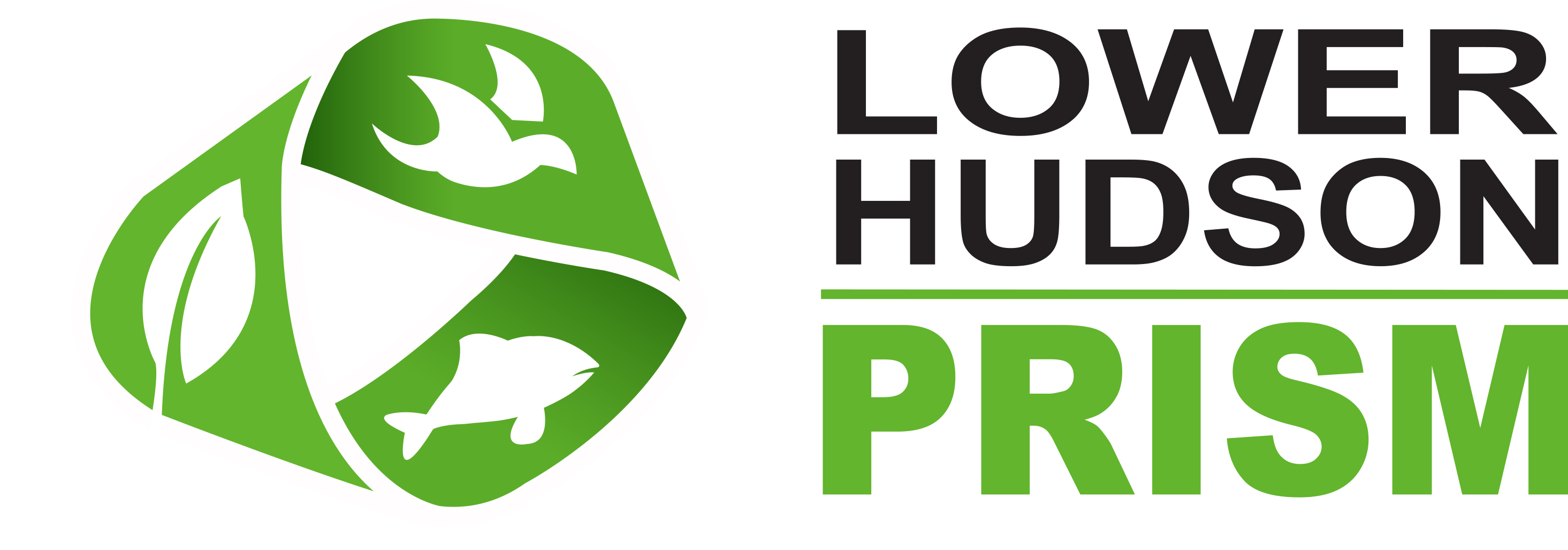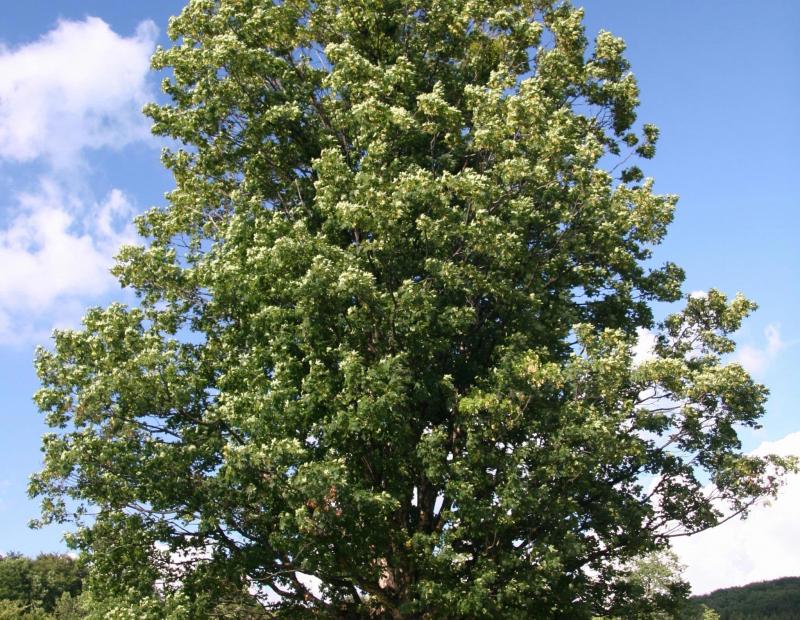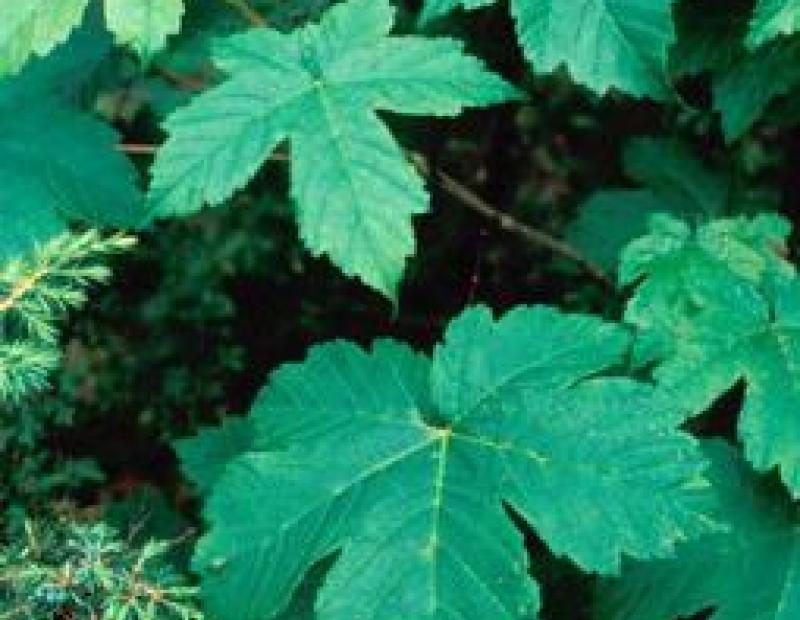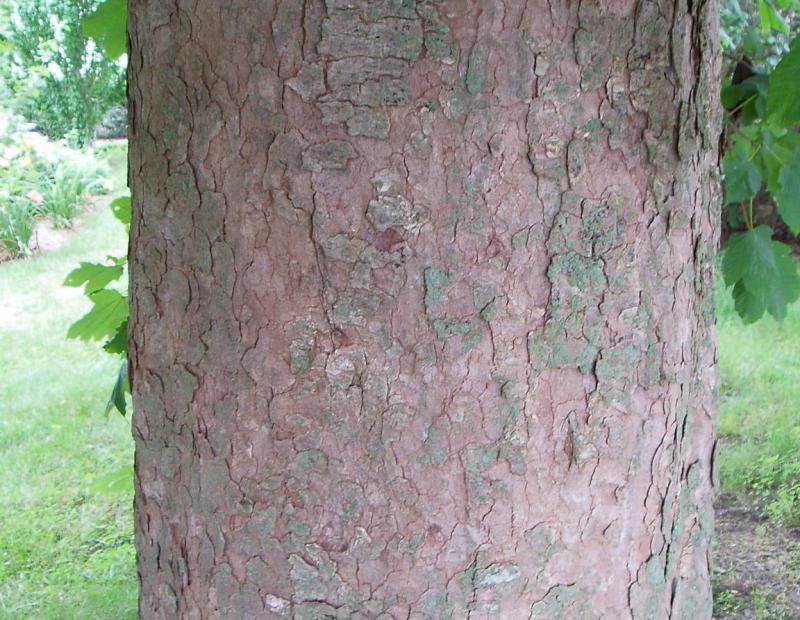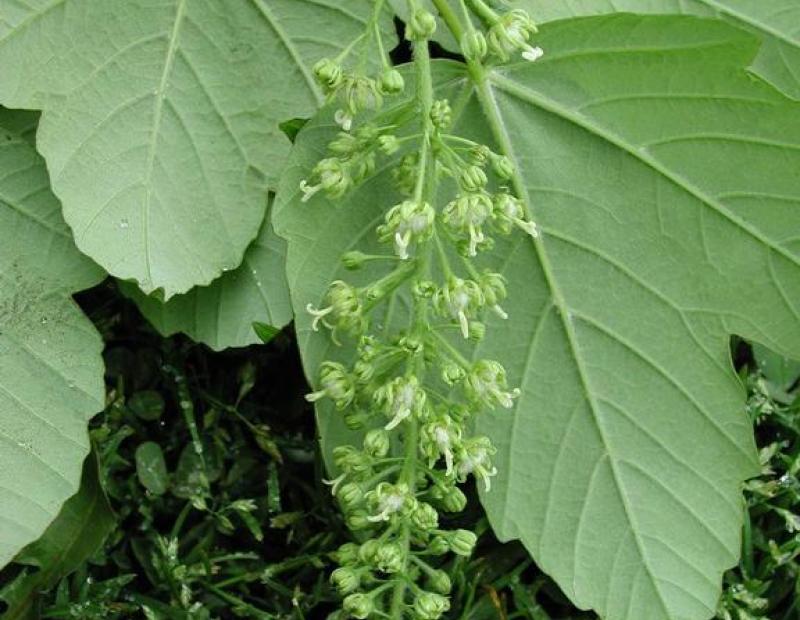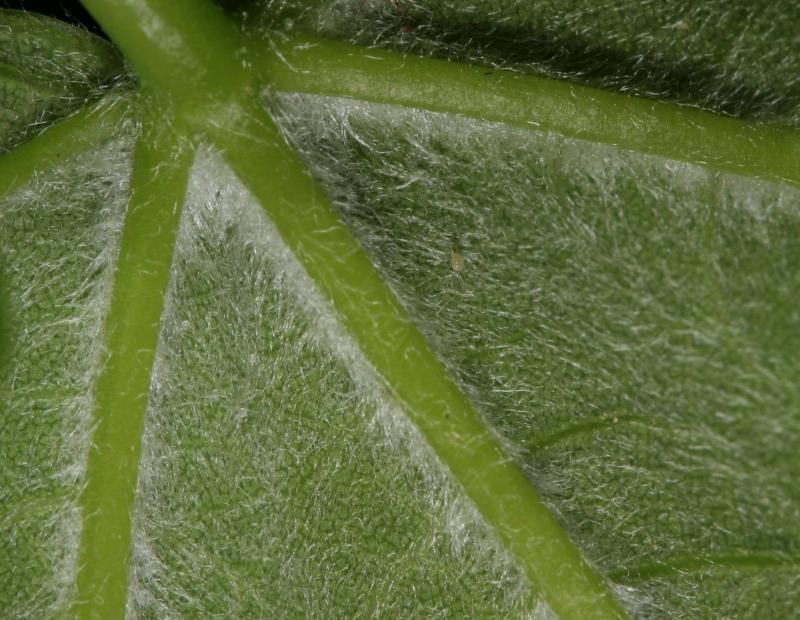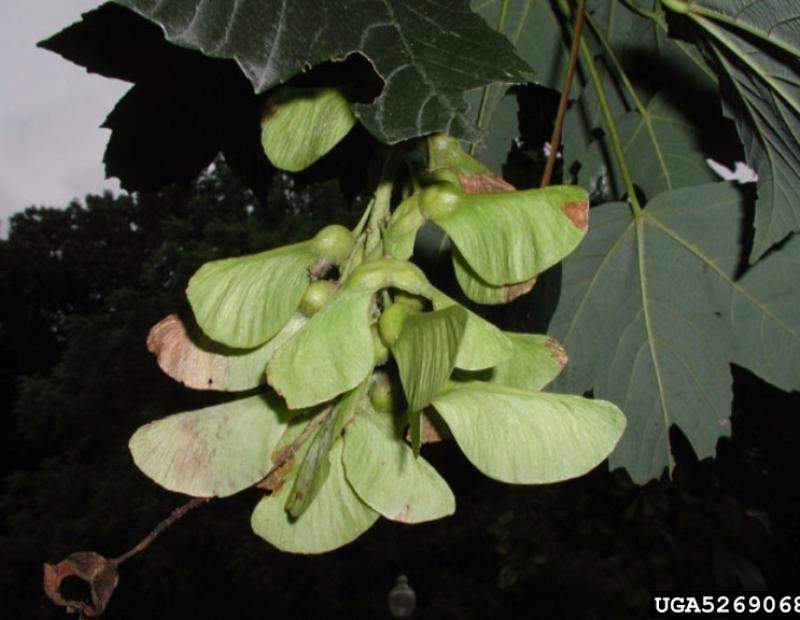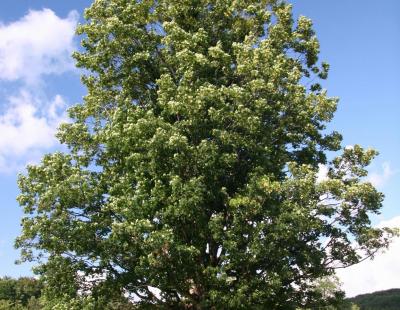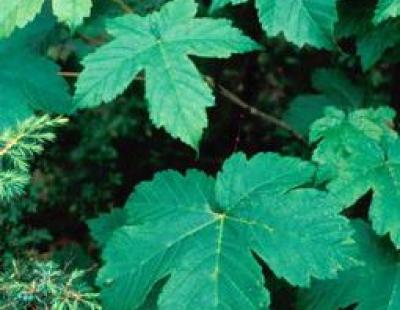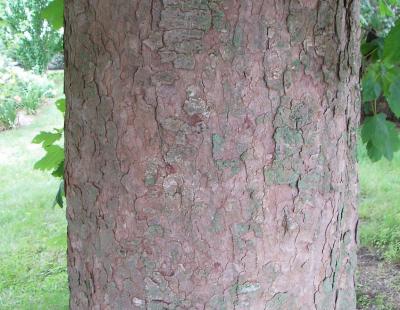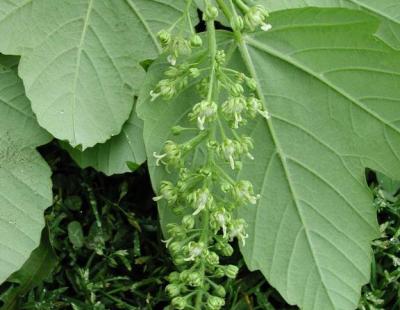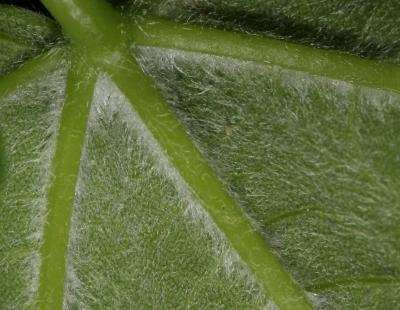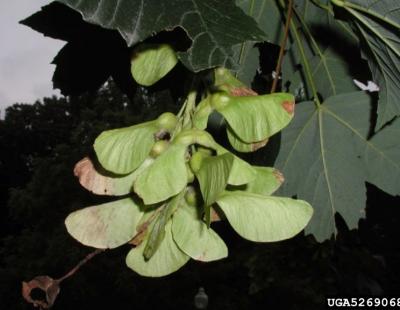Vertical Tabs
- Sycamore maple is a member of the Soapberry family (Sapindaceae).
- A member of the Sapindaceae, sycamore maple bears the same distinctive leaves as the common New York trees red maple and sugar maple. Capable of growing to 100 feet, this tall tree has irregular, scaly, flaky bark which when peeled off reveals a slightly orange cambium. (4)
Leaves
Leaves are dark green, palmately veined, three to six inches long and leathery to the touch. The major veins on the underside of the leaf are covered in soft hairs. Although the leaves technically have five lobes, the two lower lobes are reduced in size. (3)
Flowers
Yellowish-green flowers appear in late May in dangling clusters two to six inches long. The flower’s stamens protrude well beyond the rest of the flower’s parts. Flowers produce paired samaras, with much broader wings than the native maples occurring in New York. (3)
Sycamore maple is an extremely shade tolerant, prolific seed producer capable of adapting to a variety of soil conditions. Due to its large leaves and quick growing seedlings, young sycamore maples are able to germinate and out compete understory competition, rapidly converting diverse forests and woodlands to homogeneous stands. (5)
Biological Control
No biological control option is currently available.
Manual or Mechanical Control
Pulling / Digging Up: Hand pulling or digging small infestations is possible, but care must be taken to remove all the root (4)
Mowing: Mowing or cutting encourages forking of sycamore maple’s stem, and generally does not cause mortality. (2)
Girdling: Best done in spring. If girdling is not accompanied by any means of chemical control, the managed population must be revisited to remove any root suckers.
Prescribed Fire: No information available
Prescribed Grazing: Although sycamore maple is palatable to a number of species, grazing rarely results in plant mortality. (2)
Soil Tilling: Not applicable
Mulching Not applicable
Solarization: Not applicable
Hot Foam Spray: No information available
Chemical Control
The pesticide application rates and usage herein are recommendations based on research and interviews with land managers. When considering the use of pesticides, it is your responsibility to fully understand the laws, regulations and best practices required to apply pesticides in a responsible manner. At times, the pest you seek to treat may not be on a pesticide label, requiring a 2ee exemption from NYSDEC. Always thoroughly read the label of any pesticide and consult the NYSDEC or a licensed pesticide applicator with questions.
Foliar Spray: Apply a 3% solution of glyphosate product in the growing season to seedlings or trees less than six to eight inches. Always read and follow all instructions on the herbicide label. (9)
Cut Stump: Larger trees can be effectively controlled by cutting in spring and immediately applying a solution of glyphosate or triclopyr. All treated trees should monitored for re-sprouting in 2-3 weeks and in the following growing season. (8)
Basal Bark: Trees up to four inches in diameter can be effectively controlled by applying a 25% triclopyr and mineral oil solution to the lower bark of the tree. This is most effective when done in early spring. (8)
Hack-And-Squirt: No information available
Stem Injection: No information available
Pre-Emergent Spray: Not applicable
Cut and Frill: Apply a 50% solution of glyphosate or triclopyr to cuts in sycamore maple’s cambium, made at a height of six to 18 inches from the ground.
General management overview and recommendation
As with any other invasive infestation complex, large stands of sycamore maple are best managed via a combination of mechanical and chemical means. All managed infestations should be monitored for several years to ensure exhaustion of the seed bank (4). Any new seedlings can be hand pulled. Even when using the most effective methods of chemical control, managed populations must be monitored due to the species’ strong tendency to form root sprouts.
Post treatment monitoring
Controlled populations should be revisited at least 2-3 times a season for at least 2-3 years to ensure exhaustion of the seed bank and that no re=sprouting has occurred.
Disposal Methods
All populations should be managed prior to seed set to reduce likelihood of regeneration in managed stands. Managed material should be chipped and can be composted as long as roots are thoroughly dried.
REFERENCES
- http://nyis.info/regulated-species/#Prohibited%20Terrestrial%20Plants
- https://academic.oup.com/forestry/article/82/4/361/547818
- https://www.eddmaps.org/ipane/ipanespecies/trees/Acer_pseudoplatanus.htm
- http://www.njisst.org/files/plantidfactsheets.pdf
- https://www.cabi.org/isc/datasheet/2884
- https://gobotany.newenglandwild.org/species/platanus/occidentalis/
- https://www.invasiveplantatlas.org/subject.html?sub=10634
- http://www.docs.dcnr.pa.gov/cs/groups/public/documents/document/dcnr_010...
- https://wiki.bugwood.org/Acer_pseudoplatanus/NJ
